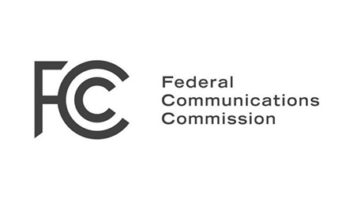Famed German radio maker Grundig may have gone bankrupt, but in North America the Grundig name lives on.
The reason? Since the mid-1980s, Grundig shortwave radios sold here have been designed, manufactured and distributed by Eton Corp.
“Eton is independent of Grundig Germany and is a licensee for Grundig AG shortwave radios in the North American markets, as well as certain markets outside of North America except EEC markets,” explained a news release issued shortly after Grundig’s April bankruptcy by the Palo Alto, California-based radio firm.
“Eton, as an independent company, will continue to supply products and fulfill all obligations to its customers as usual.”
Eton won’t just continue to sell Grundig-branded shortwave radios in North America, but it will likely also remain the continent’s dominant player. Thanks to the business savvy of founder, president and CEO Esmail Hozour, Eton has transformed North America into “the one region in the world where Sony is not number one,” said Larry Magne, editor-in-chief of Passport to World Band Radio.
The company “has taken the market, and walked away with it. They own North America, pure and simple,” he said.
Radio powerhouse
Few would have foreseen Eton’s rise to dominance 19 years ago, when Hozour founded the company under the name Lextronix.
“Our primary emphasis was to distribute Grundig-branded products,” he said, “TVs, VCRs and some audio products including shortwave radios.”
(click thumbnail)Eton’s biggest seller is the FR200 receiver that includes an LED flashlight and hand-cranked generator that tops up its batteries.
In general, Grundig products didn’t sell in North America. They cost more than the competition’s, without offering consumers clear reasons for paying extra. As a result, by 1990, Hozour decided to stop carrying Grundig video products and “instead concentrated 100 percent on our shortwave radios.”
Why? It’s a good question; by the mid-1980s, shortwave radio was viewed as a dying medium. It was the province of DXers – people who hunt for distant broadcasts, DX being an old Morse Code term for distant station reception – and other fringe hobbyists, not the general public. Small wonder that Zenith had exited the market and that Panasonic eventually pulled out in 1997.
Today, there are only three big names in shortwave radio manufacturing: Grundig, Sangean and Sony.
However, shortwave radio still commanded 600 million listeners worldwide, including North America. Moreover, there was a large, untapped market for shortwave radios among consumers who had vague romantic notions of pulling the BBC and Radio Moscow out of thin air but no clue about how to do it.
More important for Lextronix/Eton, shortwave radios offered fatter margins than most consumer electronics. The reason is mystique; consumers don’t understand how shortwave radio works. As a result, they’re willing to pay more for it.
“The margins in SW are incredible,” Magne said. “Technology that you could charge $20-30 for in an AM/FM radio can easily be priced at $100-$200 in a shortwave radio, and people will happily pay for it.”
Three-fold strategy
Of course, margins alone are useless if nobody buys your product. To make these margins matter, you’ve got to manufacture and sell in volume, a fact Esmail Hozour soon grasped.
To do this, he developed a three-pronged approach.
The first prong is “something for everyone.” Eton has developed a wide range of SW radios, from the $29 Mini World 100 PE portable to the top-of-the-line $500 Satellit 800 digital receiver. The $79.95 Grundig P2000 is a sleek silver slab designed by Germany’s F.A. Porsche. In contrast, the $149.95 retro-styled Grundig Classic 960 – a remake of the 1950s million-seller Grundig 960 – comes in a real wood, glass, cloth, and brass-trimmed case.
Right now, Eton’s biggest seller is the homeland security-targeted Grundig FR200. For $39.95, the FR200 comes with AM/FM/SW, a built-in LED flashlight and a hand-cranked generator that tops up the set’s rechargeable batteries. Despite its mock military styling, the FR200 is a solid performer with good audio, and even a SW fine-tuning dial.
Another prong is quality outsourcing; Eton says it has reduced costs by contracting production to offshore firms. “They are very reliable, and provide high-quality products,” said Hozour.
The third prong is promotion. Eton’s success is based on “marketing, marketing and marketing,” Magne said, including large ads in Time, Newsweek, the New York Times and the Wall Street Journal, plus radio and TV.
The result? “Through our intensive advertising, we generate 500 or more calls a day to our 800 number,” Hozour said. “When they call, we send them a catalog. Based on the Zip code they give us, we refer them to a local dealer.”
Magne said, “Hozour once did a marketing trial on CNN’s FNN in 1989. He priced Satellite 650s, which normally cost $650, at $999.95 just to see if they would sell on TV. They did; hence the reason Hozour quickly grasped that shortwave could be a very lucrative business.”
Plans
With a solid grasp on the Grundig name and the North American market, Europe could be next on Eton’s list. After all, “If our formula works so successfully in North America, which is the most competitive market in the world, it should work in Europe,” Hozour said.
Time will tell if Eton will tackle Europe on its own or under the Grundig banner. Hozour isn’t revealing his plans. However, the fact that his new Grundig S350 receiver box is labeled as being made by “Eton Corp./Grundig” may give some clue to Hozour’s branding intentions.












